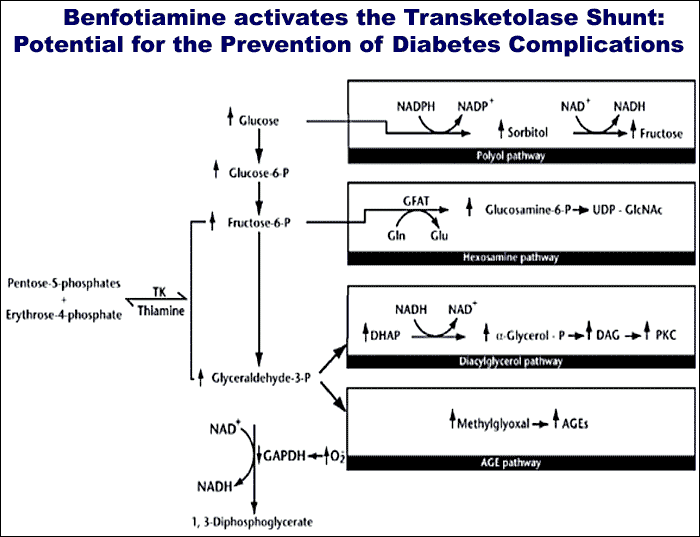
Figure 6.A unifying hypothesis has been postulated to explain the pathogenesis of the microvascular complications of diabetes. The contribution of these pathways to glucose toxicity in the β-cell and peripheral insulin target tissues is likely, but remains to be well defined. Briefly, in this model increased mitochondrial glucose metabolism results in the increased generation of ROS (reactive oxygen species). These in turn inhibit the key glycolytic enzyme GAPDH (glyceraldehyde 3-phosphate dehydrogenase), both directly (it is redox sensitive) as well as by decreasing intracellular [NAD+]. A block at this site results in increased glucose flux through various pathways, namely the polyol pathway, the HBP, the diacylglycerol synthesis-PKC activation pathway and the AGE (advanced glycation endproduct) pathway. The consequences of the products of these pathways are cell and tissue toxicity, i.e. dysfunction and damage. A recently proposed mechanism to reverse these fluxes is to enhance transketolase activity with large doses of thiamine, a cofactor. This would convert the 6- and 3-carbon sugars to products metabolized by the pentose phosphate pathway. (Reproduced with permission from ref. 141).
